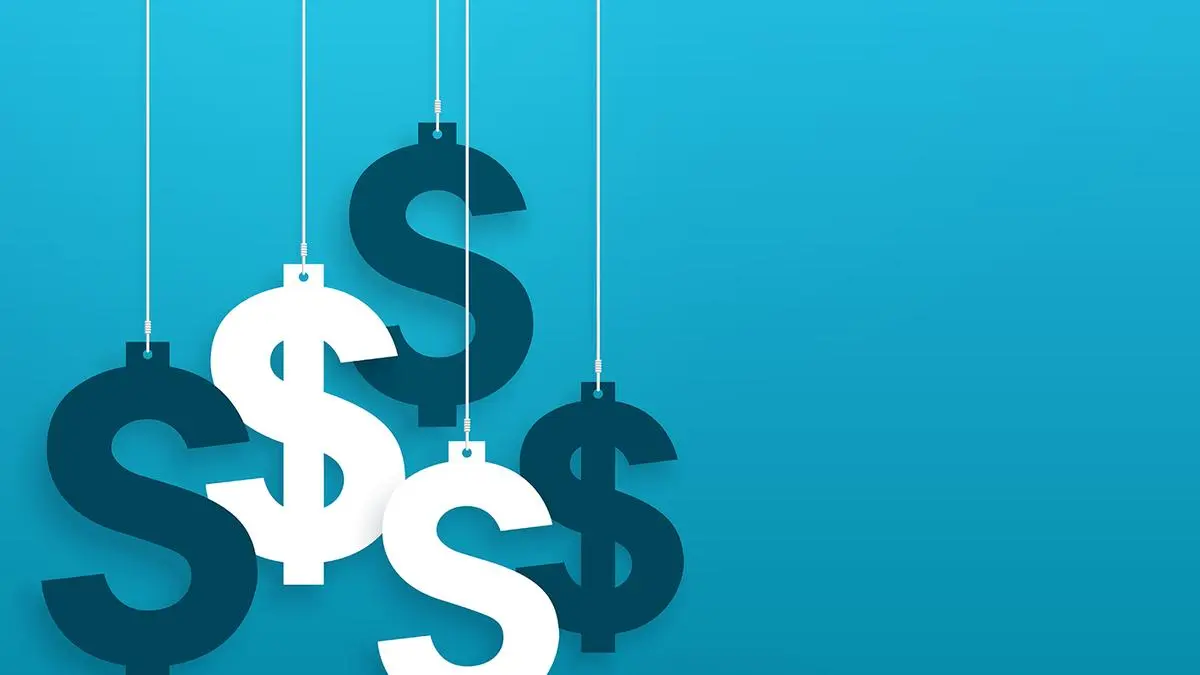
Dollar signs hanging on the ropes on blue background.
| Photo Credit:
iStockphoto
De-dollarisation is the buzz word in economic circles these days. Why not, after all the confusion and chaos unleashed by Trump tariffs and the eroding trust in the dollar!
Given the wild movements in the dollar, the euro and gold in the first four months of 2025, one might be tempted to think this is now a secular trend underway.
For example, the 8.31 per cent fall in the dollar index in the first four months is the second steepest fall in the last fifty years. The euro, the largest component in the dollar index with a weightage of 57.6 per cent, has risen 9.41 per cent against the dollar in this period.
This is the third largest rise for the fifty-year period (prior to 1991, the euro value was computed using Deutsche Mark). Further, gold recorded its second-best year for the four-month period in the last fifty years.
The yellow metal’s 25.28 per cent surge is the second highest, after the 26.58 per cent rise seen in 2006. At a high of $3,500 per ounce reached in April, gold’s surge stood at 33.36 per cent.
These are big, historical moves that are both a result and a consequence of investors globally beginning to prefer non-US assets, reversing a multi-decade trend.
But with these may come new challenges for the global economy. For, after all, the US and global economy are conjoined at the hip!

The other side
The dollar weakness will make the US’ import cost shoot higher under a normal situation. But this time, things are going to be different when higher tariffs are also going to come into play.
A weak dollar plus higher import tariff will be a double whammy for American importers and, consequently, for its trade partners as well.
Data from the US Bureau of Economic Analysis (BEA) show that goods imports into the US rose a significant 12 per cent to $328.93 billion (in February) from $293.36 billion (in December.
Part of this because of some pull forwards in imports ahead of expected tariff announcements. But the key factor to note here is that US goods imports are significant at an annual rate of around $3.5 trillion.
Ripple effect
The ongoing development in the currency market can impact global economies in two ways.
The first scenario could be that, if the US companies decide to reduce their imports on the back of high tariffs, then the economies of the countries that export to the US will get hit. It will cause a global trade slowdown.
The second scenario would be that if business remains as usual, then the US importers will have to pass on their cost to their consumers.
This will push up the inflation in the US thereby increasing the chances of an economic slowdown there. In either case, there is a danger of a possible global slowdown going forward if the dollar index continues to fall.
Escape Plan
To avoid the dangers of a global slowdown mentioned above, the fall in the dollar index should halt, a rise above 100 and sustain it.
On the charts, the level of 96 is a crucial support for the dollar index. If that holds and a rise above 100 happens, then the dollar index can go back up to 104-106 again.
This will avoid the worst-case scenario.
But if the dollar index declines below 96, it can tumble to 90. This will worsen the condition and will increase the risk of seeing a global economic slowdown this year.
Any victory on de-dollarisation that is claimed then, could turn out to be a pyrrhic victory.
Published on May 3, 2025
Anurag Dhole is a seasoned journalist and content writer with a passion for delivering timely, accurate, and engaging stories. With over 8 years of experience in digital media, she covers a wide range of topics—from breaking news and politics to business insights and cultural trends. Jane's writing style blends clarity with depth, aiming to inform and inspire readers in a fast-paced media landscape. When she’s not chasing stories, she’s likely reading investigative features or exploring local cafés for her next writing spot.






